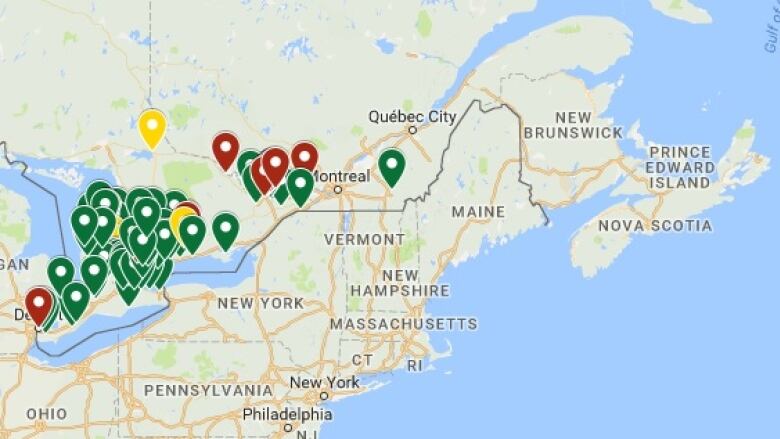National map with assisted dying data hits 'roadblocks' in Nova Scotia
Dying with Dignity Canada says it's been unable to gather information from the province's health authority

The Nova Scotia chapter of a national advocacy group for assisted dyingsays it has hit a brick wallin working with the province's health authority to create a public map of institutions that provide the intervention.
Sheilia Sperry, the Nova Scotia co-ordinator for Dying with Dignity Canada,said she and volunteers began trying to compile that information following thelegalization of medical assistance in dyinglast June.
They hoped to include it in the organization's Shine a Light project, a national initiative aimed at increasing easy access to information for all Canadians.
At first, Sperry said she was heartened to see informationand application forms for assisted death on the Nova Scotia Health Authority's website.
"The various forms were there and I thought, 'This is good.Nova Scotia is going to be very open about this,'" she said.
"But then we started making telephone calls."
'Absolute roadblocks'
Sperry said she and two volunteers called hospitals and long-term care facilities one by one, but didn't get very far.

Then they turned to the Nova Scotia Health Authority for answers, but were denied. Sperry said one volunteer was told over the phone such information about specific hospital policies may never be released.
"[We] have run into absolute roadblocks," she said. "It's like they don't want us to know."
A map posted on Dying with Dignity's websitepinpointsvarious institutions and their policies on assisted dying with coloured indicators. A green symbol means assisted dying is allowed on-site, while yellow means maybe or an unclear policy. Red means assisted dying is not allowed on-site.
Nova Scotia doesn't have any indicators on that map, nor does any other Atlantic province. Ontario, by comparison, has dozens.
Few statistics available
The Nova Scotia Health Authority has what it describes asa "central intake process" for patients and doctors who have questions about medically assisted dying. They also help people navigate the process.
"Most importantly, we provide the service to patients in the most appropriate environment for their identified needs," spokesperson Kristen Lipscombe said in an emailed statement.
"Many of our requests for medical assistance in dying happen in the patient's home and have no association whatsoever with a hospital."

Because patients have access to information wherever they are in the province, the health authority said "it makes sense to show the province as green" on the map.
Neither the Canadian Institution for Health Information nor Statistics Canada have data available about medically assisted dying.
'A range of responses' in Canada
Cory Ruf, a spokesperson for Dying with Dignity Canada, saidthe issues faced by the organization's Nova Scotia chapter have been more challenging than what other provinces have experienced.
"Our chapters and volunteers are encountering a range of responses," he said.
"Some are finding that stakeholders in the community are being very co-operative in answering their questions. Others, it's taking a bit of time."
Ruff saidthe map is not about "shaming institutions" into providing assisted dying. He explained it will always be evolving and isn't a perfect representation of accessibility to medically assisted dying in Canada.
"This is not a science," he said. "We are a small organization doing the best we can, leaning heavily on our supporters."
He said the map is populated by information gathered from contacting institutions directly, filling out forms, reviewing policies that are publicly available, or going by crediblenews reports.
Dying with Dignity intends to helpthe Nova Scotia chapter file a freedom of information request in the future to learn more.
What's the norm?
Lisa Feldstein, a health lawyer in Toronto, saidit's not the norm to see specific hospital policies online.
"They have dozens and dozens of policies and while many may be technically publicly available, it will often require a request to be made," she said.
"If somebody doesn't find a policy about medical assistance in dying on a hospital or government website, it doesn't necessarily mean they can't legally access it."
Sperry saidthe lack of information puts the completion of their map up in the air. But it also makes end-of-life planning for Canadians difficult, she said.
"This is information that people should have easy access to at a time when they're emotionally, mentally upset."












_(720p).jpg)


 OFFICIAL HD MUSIC VIDEO.jpg)
.jpg)



























































































